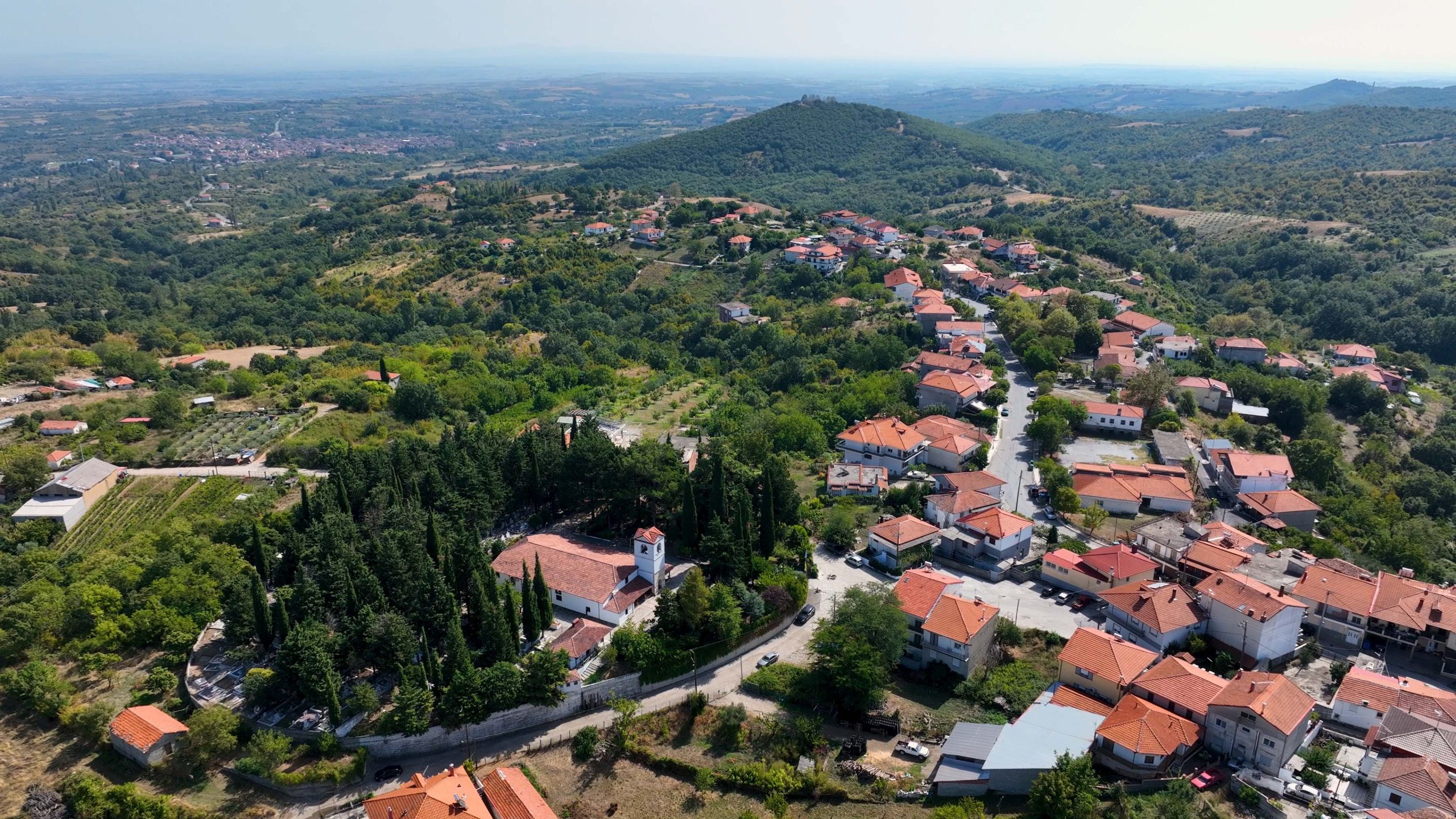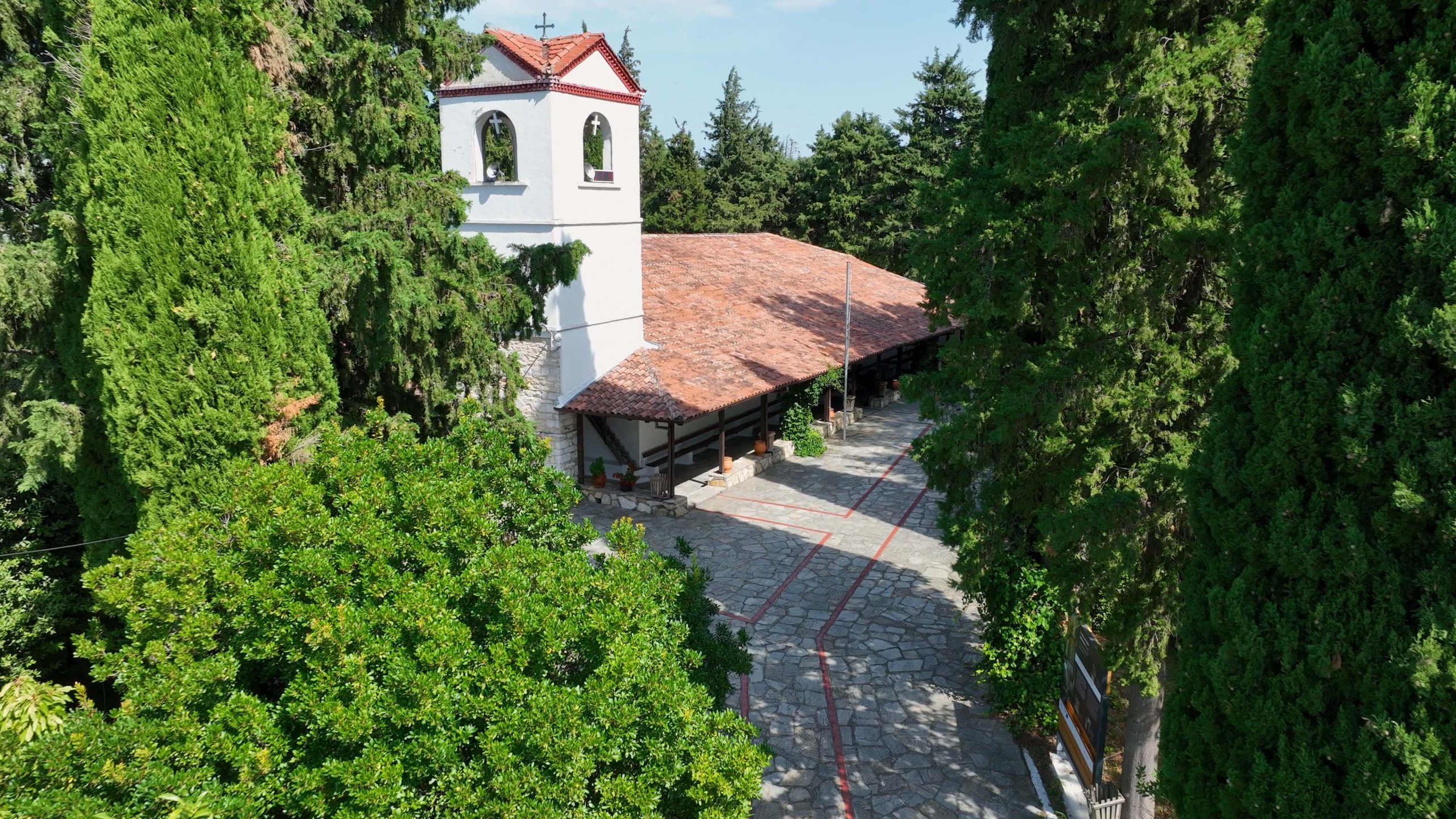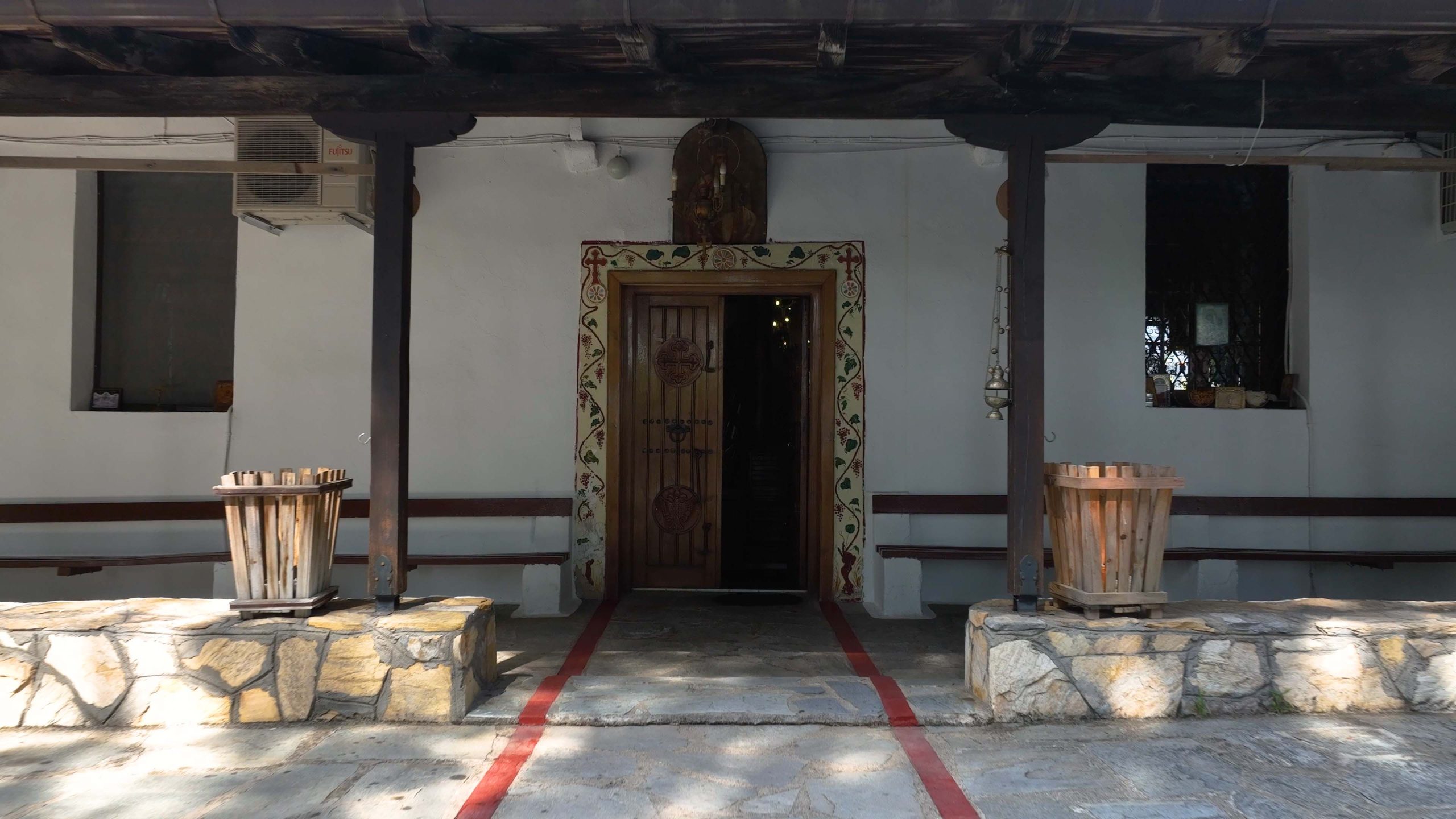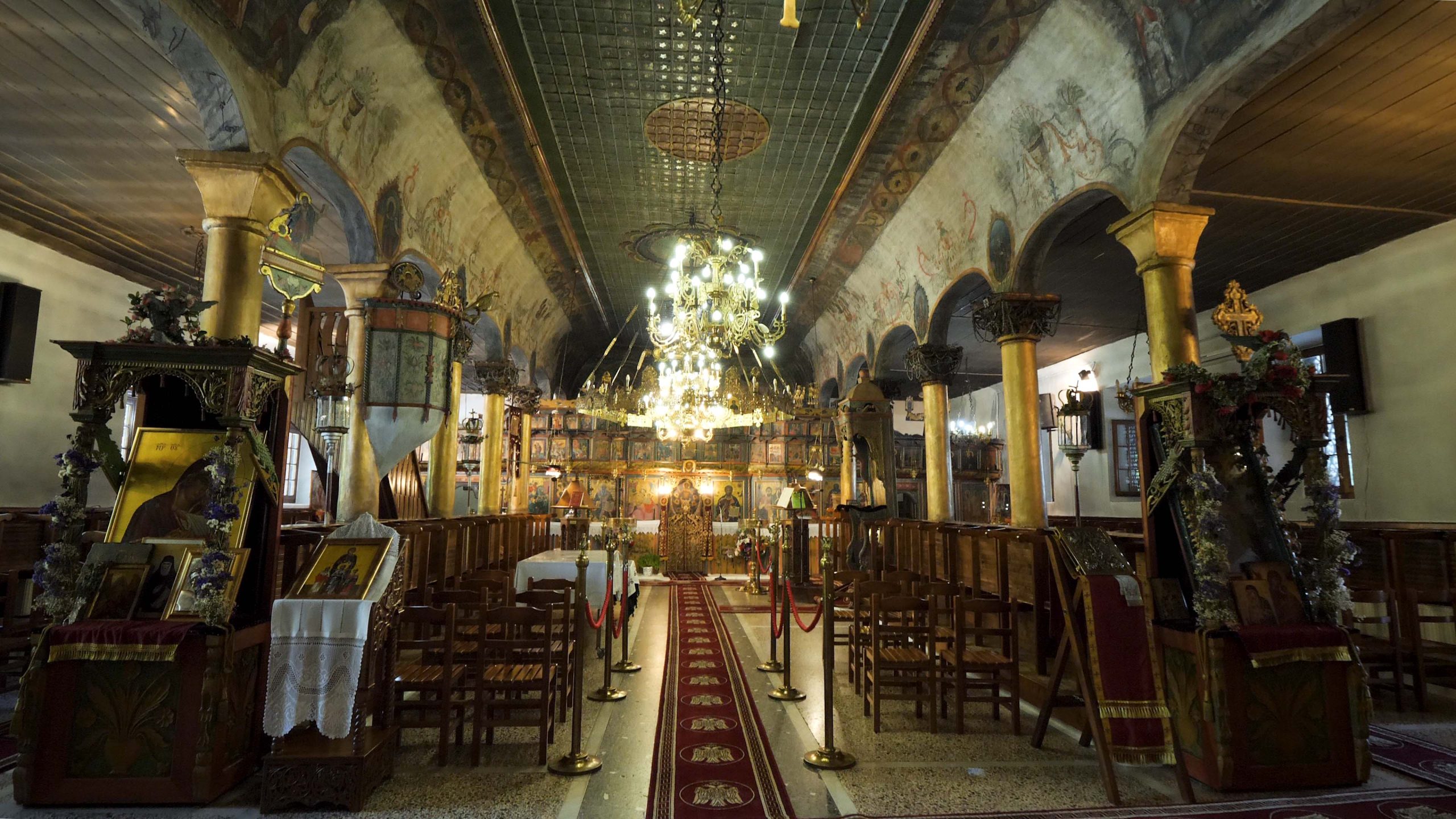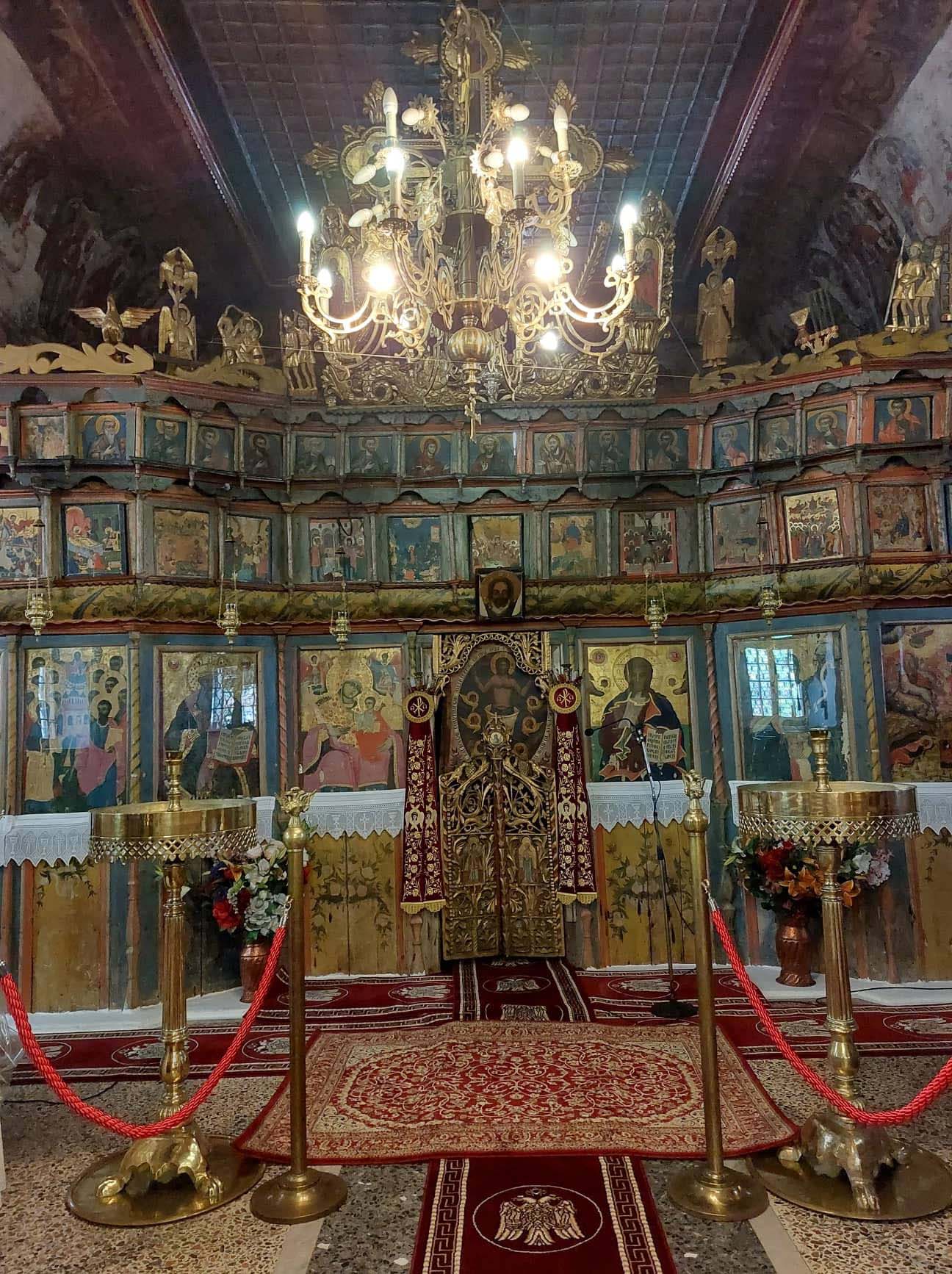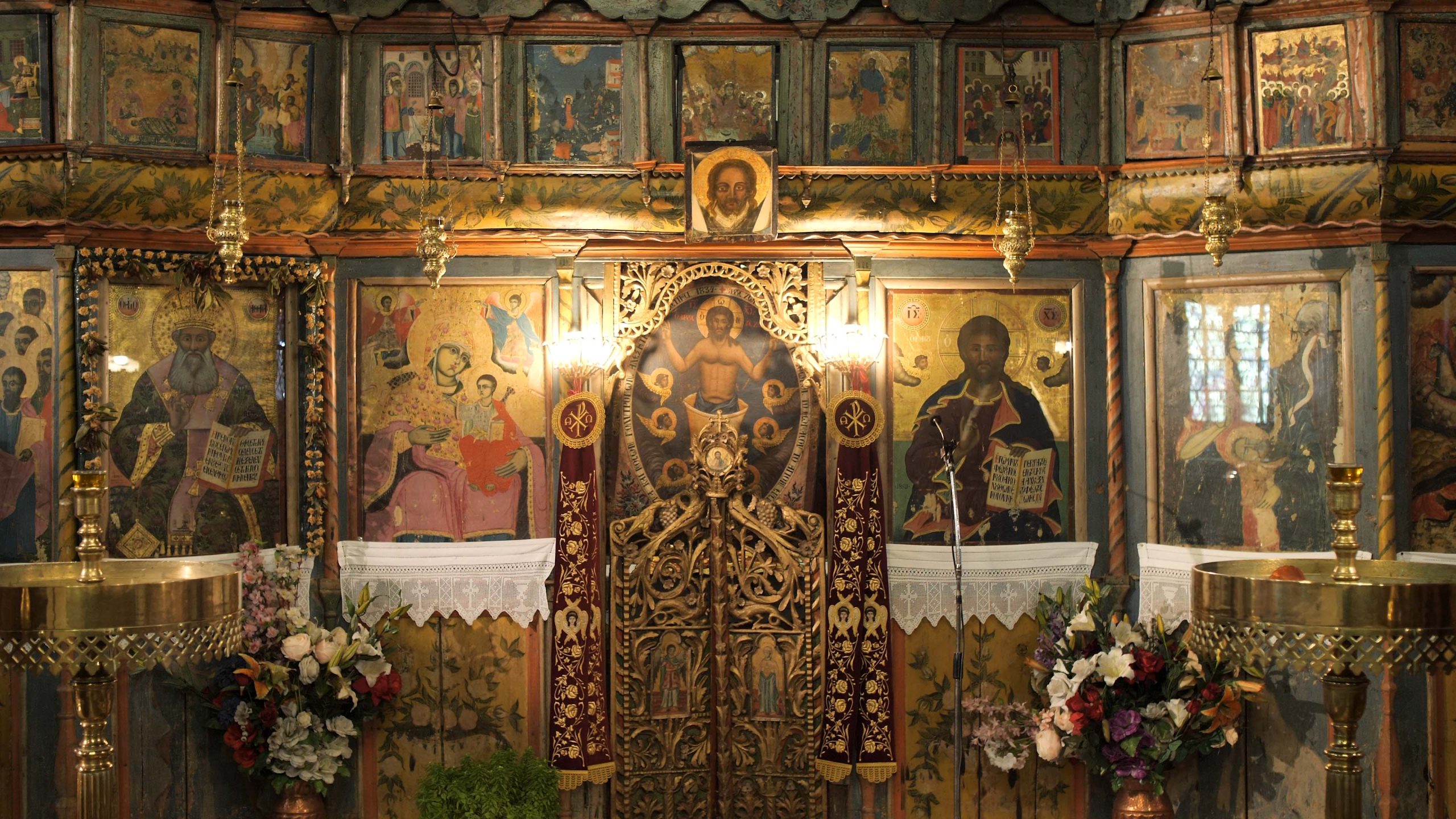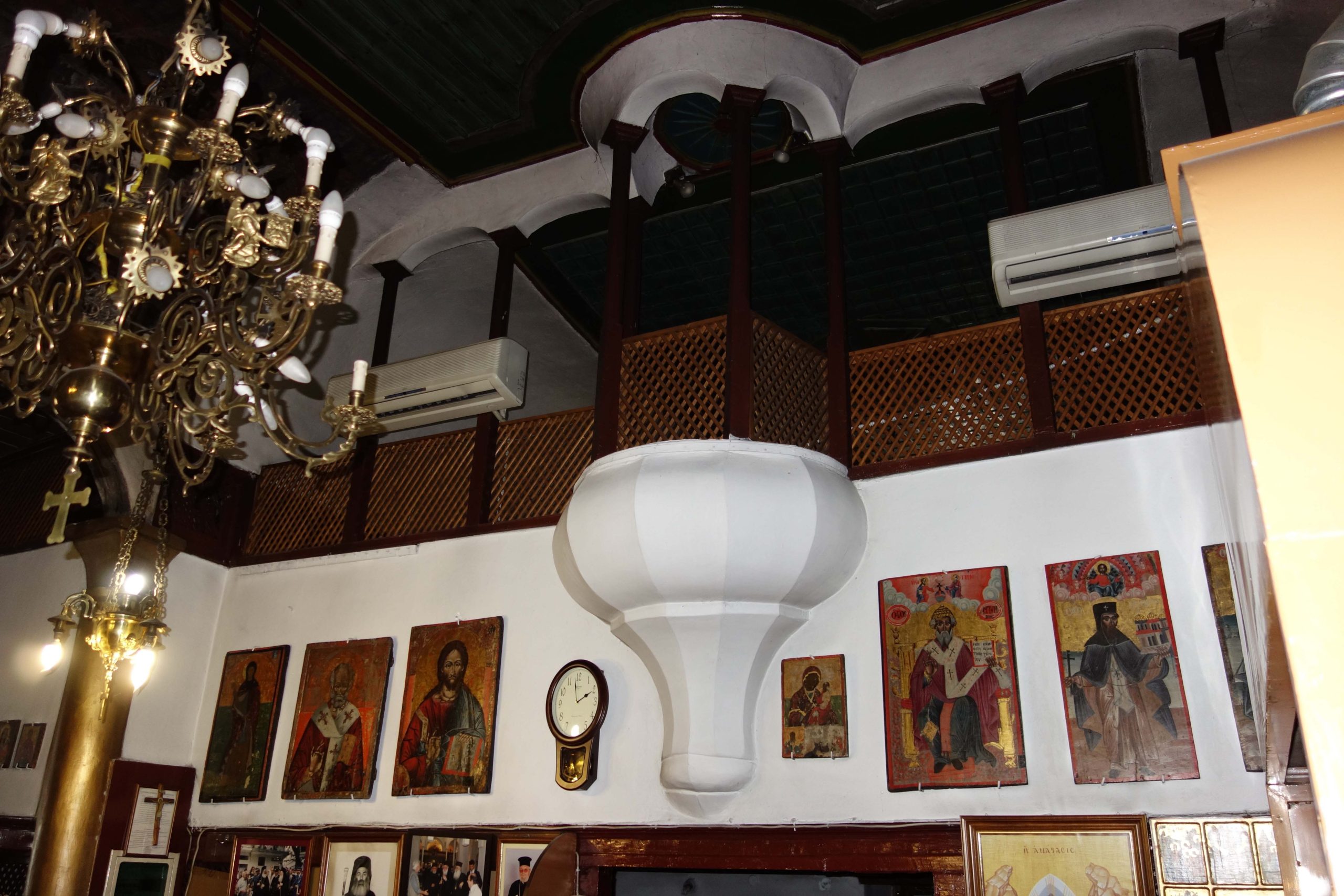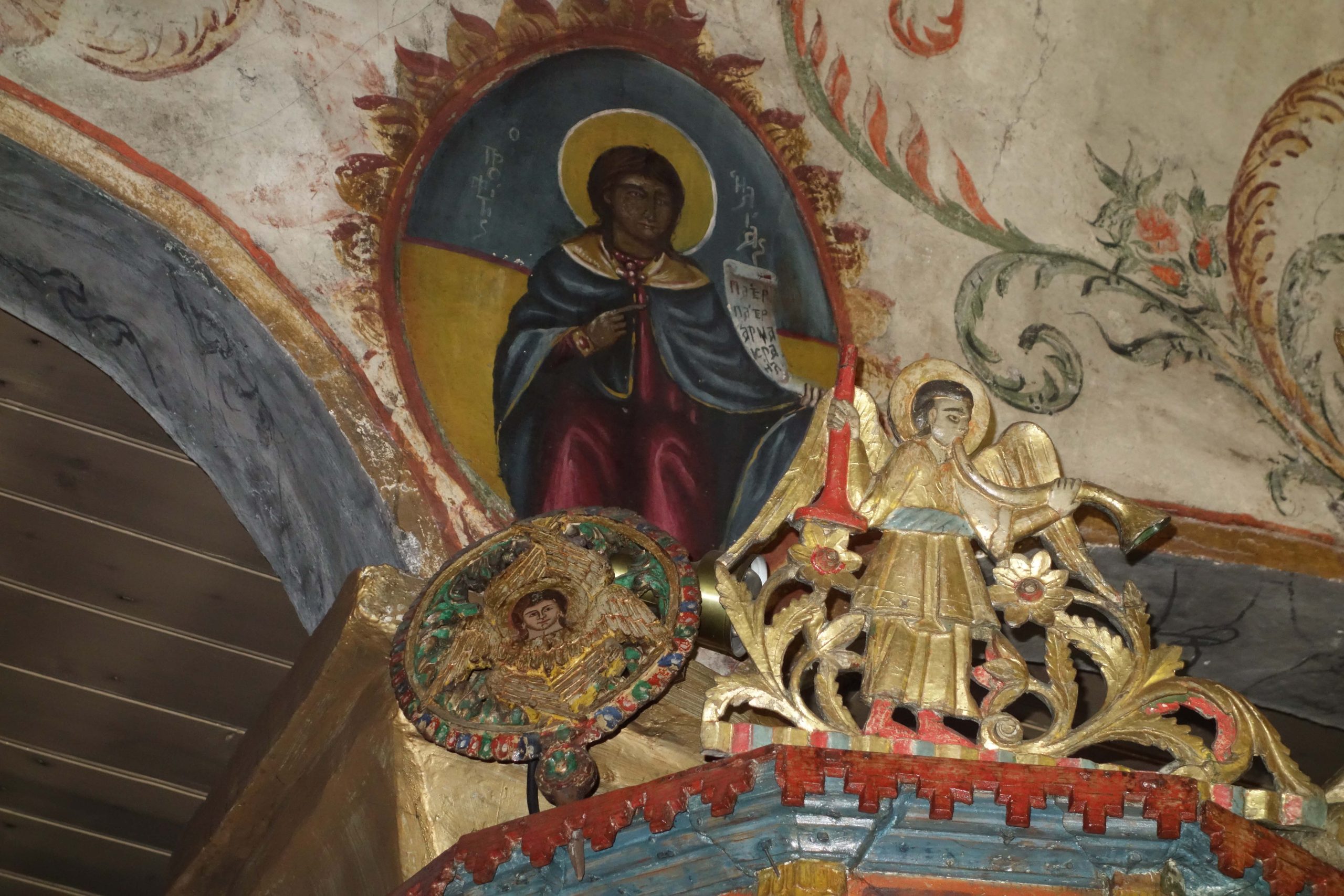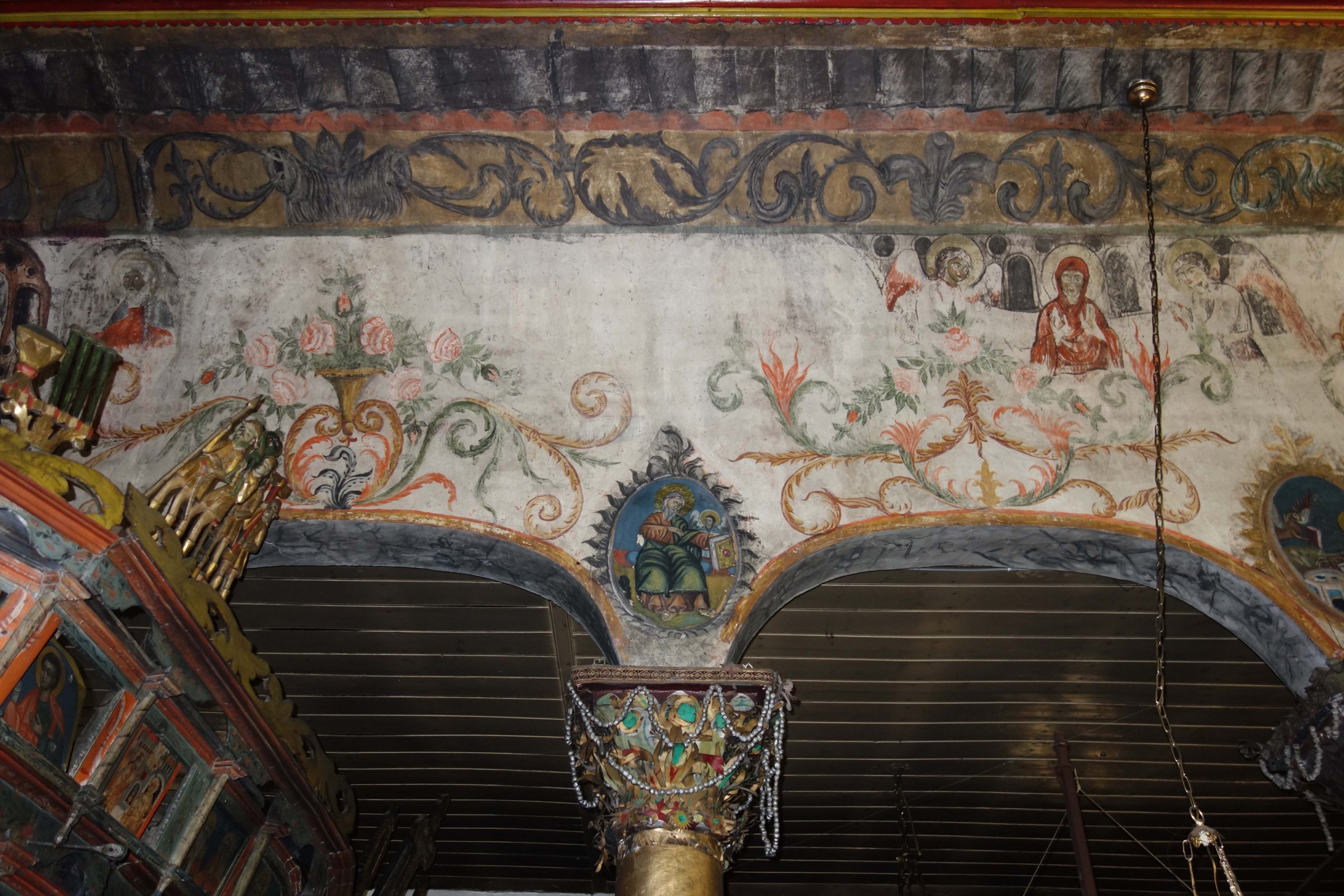This website uses cookies so that we can provide you with the best user experience possible. Cookie information is stored in your browser and performs functions such as recognising you when you return to our website and helping our team to understand which sections of the website you find most interesting and useful.
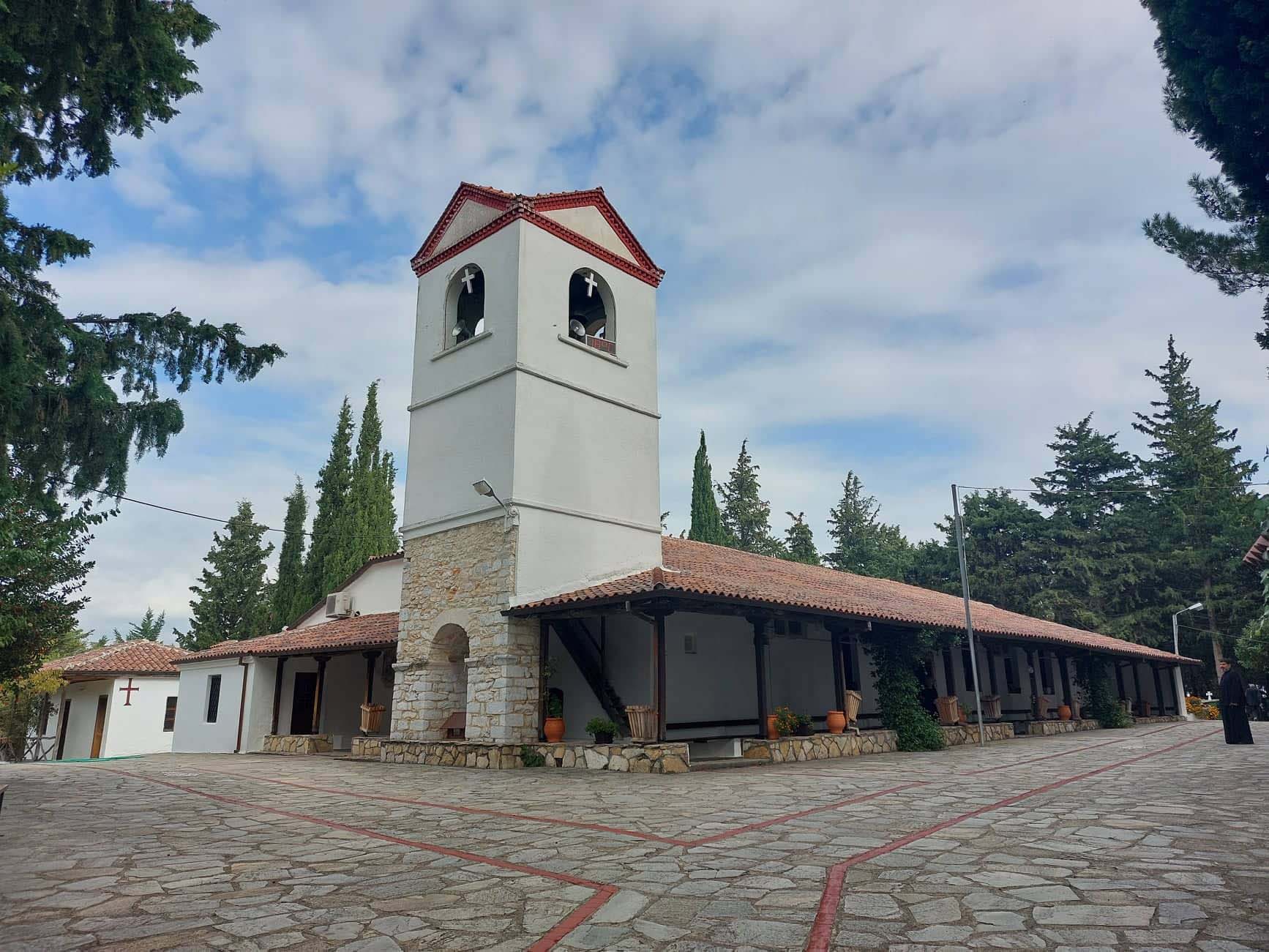
Church of St. Athanasius in Griva
The three-aisled basilica of St. Athanasios is located on a low hill on the northeast side of the settlement of Grivas and was built in 1801 on the site of an older church. In 1857, a narthex with a women’s quarters on the upper floor was added to the west side.
The ambient interior of the church is decorated by frescoes from two different phases of the 19th century. The older one includes scenes from the Christ cycle and the Old Testament, painted or partially covered by refined floral decorative themes. The elegant decorative perception of the church is emphasized by the baroque capitals with colored metal sheets of flowers, leaves and tentacles, and hanging garlands.
The balconies of the women’s quarters, a unique example in the wider area of onion-shaped constructions made of wood and stone, come from the typology of ecclesiastical pulpits and reflect the artistic perception of inspired craftsmen.
Noteworthy is also the painted iconostasis of the church with icons mainly by painters from Kolakia (mid-19th century), as well as the worship icons of the older church, dating to the 18th century.
The wood-carved crown of the temple (iconostasis) and the ornate frame in the niche of the Prothesis are of remarkable artistic value and are connected with the iconostasis of the early 19th century.
The entire church reflects the wealth of the post-Byzantine community of Kriva (Grivas), the result of its sericulture and tax exemption, thanks to the production of clothing for the Ottoman army.
